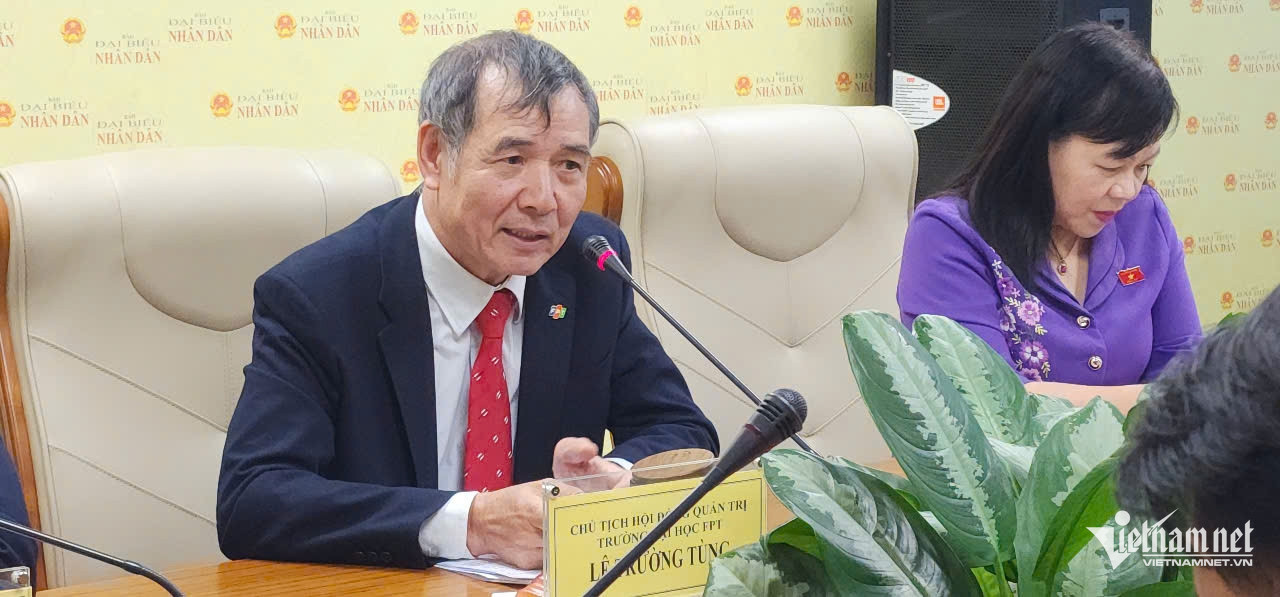
Ensuring a highly skilled workforce for science, technology, innovation, and national digital transformation is a focus of Resolution 57.
At a seminar on training a high-quality workforce titled "Momentum from Resolution 57" organized by Dai Bieu Nhan Dan newspaper on March 15, managers, educators, and businesses discussed solutions to bring this core content into practice in the near future.
Prime Minister Pham Minh Chinh said: "Resolution 57 holds especially significant importance, serving as a guiding compass in the new era, leading the country toward strong, prosperous, civilized, and thriving development, and acting as a powerful call to action for the entire Party, people, and military to strive together to make Vietnam a developed, high-income nation with global competitiveness."
Tran Luu Quang, Head of the Central Policy and Strategy Committee, said Resolution 57 is the shortest path to lead the country to a bright future, as proven by the successful experiences of nations worldwide.
STEM student ratio remains modest
Nguyen Anh Dung, Deputy Director of the Higher Education Department under the Ministry of Education and Training (MOET), noted that in 2024, over 180,000 students nationwide pursued STEM-related fields, which is crucial for developing science and technology talent.
In the past four years, STEM student enrollment has grown by an average of 17 percent annually, outpacing the national enrollment growth rate of 5.6 percent. Compared to 2023, STEM education scale in 2024 increased by nearly 11 percent.
However, in a global and regional context, this figure remains modest and lags behind other countries. Singapore, for example, has 46 percent of students following STEM majors, South Korea 35 percent, Finland 36 percent, and Germany 40 percent.
Dung affirmed that Vietnam’s higher education system considers promoting STEM education as a responsibility, a mission, and an opportunity to implement Resolution 57. Universities must attract more talented individuals to STEM fields in the coming period.
Representatives from universities attending the seminar all agreed that Vietnam needs a thorough overhaul in teaching methods.
Associate Professor Dang Hoai Bac, Director of the Posts and Telecommunications Institute of Technology, noted the Party Chief’s statement on last year’s Teachers’ Day that "every teacher must now be a scientist", believing that this is the core of universities.
“We need to teach about technology absorption, transfer and application. Only by doing this can we produce a generation capable of mastering and innovating technology,” he said.
The role of university teachers today must change. Teachers need to stay connected to real life, updating knowledge while experiencing practical environments.
"Thus, universities must link training, scientific research, and business production. These three elements cannot be separated," Bac said.
He suggested that beyond current lecturer evaluation metrics like qualifications, foreign languages, and research papers, an additional metric—technological solutions and applications—should be considered.
The three-party model of universities
Nguyen Phu Khanh, Vice Rector of Phenikaa University, said his school applies a “three-party" model in training: educators, researchers, and businesses (factories, hospitals).
"At Phenikaa, we have six startups involving the three-party principle. These models create rich experiences for students and researchers," Khanh said.
The vice rector of the private university said that his lecturers can be divided to some groups: those who focus solely on teaching, those who focus on research, and those who engage in both.
Tung of FPT University said Resolution 57 marks a historic milestone impacting all socio-economic institutions, including higher education.
"I believe that without addressing the high-quality workforce challenge, it’s hard to ensure success in meeting Resolution 57’s goals. Human resources are critical, and we can’t produce talents overnight. It’s a major challenge," he said.
With Resolution 57’s tasks, higher education can no longer be just an "ivory tower."
FPT University plans to establish a research institute focused on AI, quantum computing, and cybersecurity.
"We intend to place this institute within the corporation (FPT), not the university. Researchers need connections, and placing it in the corporation will better attract talents, including high-quality experts from abroad, than within a university," Tung explained.
Discussing the need to change teaching and learning methods, he said it’s inevitable with AI’s emergence. Statistics show that 20 percent of ChatGPT use is for completing exercises and assignments.
“In a context where AI has changed the way of teaching and learning, institutional regime, state management, and regulations on education metrics cannot stay the same. Keeping them unchanged will stifle progress," Tung said.
Nguyen Thao